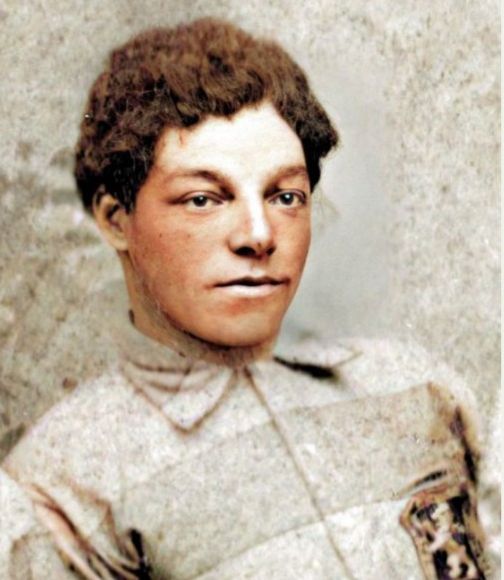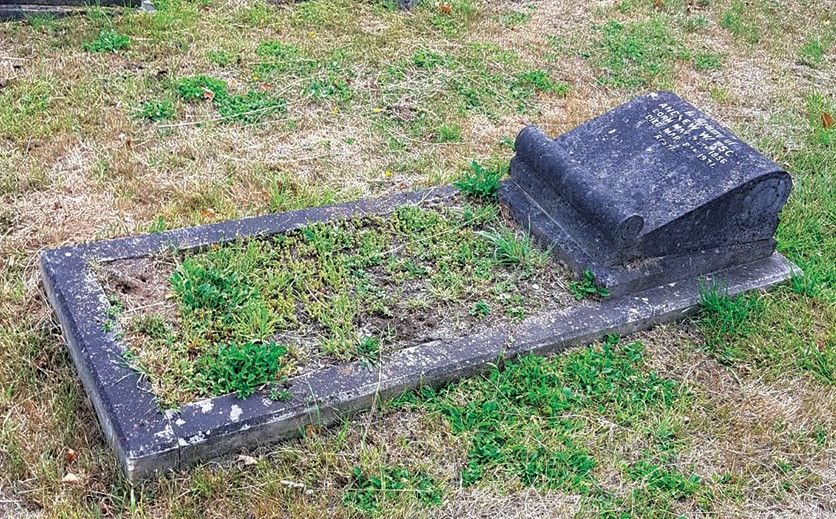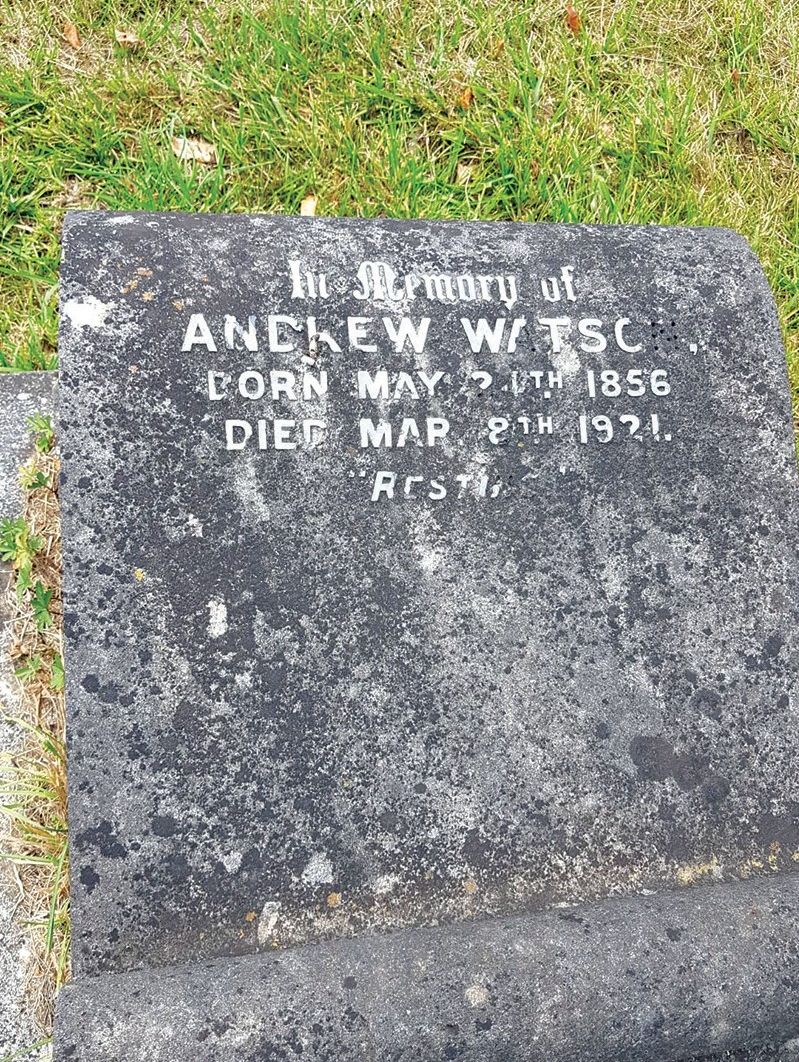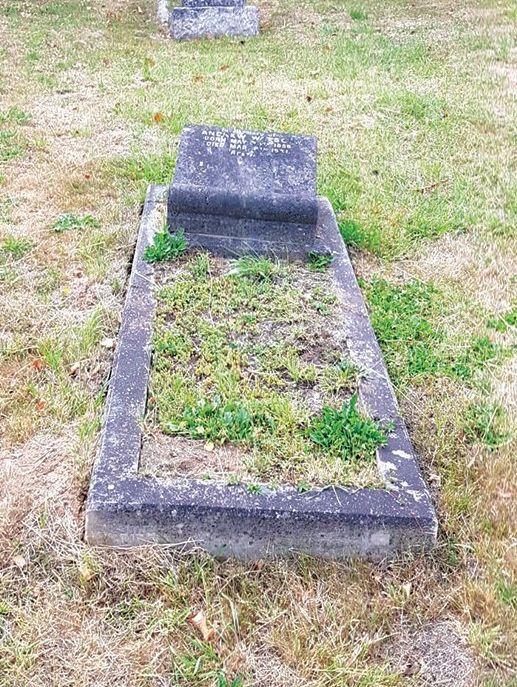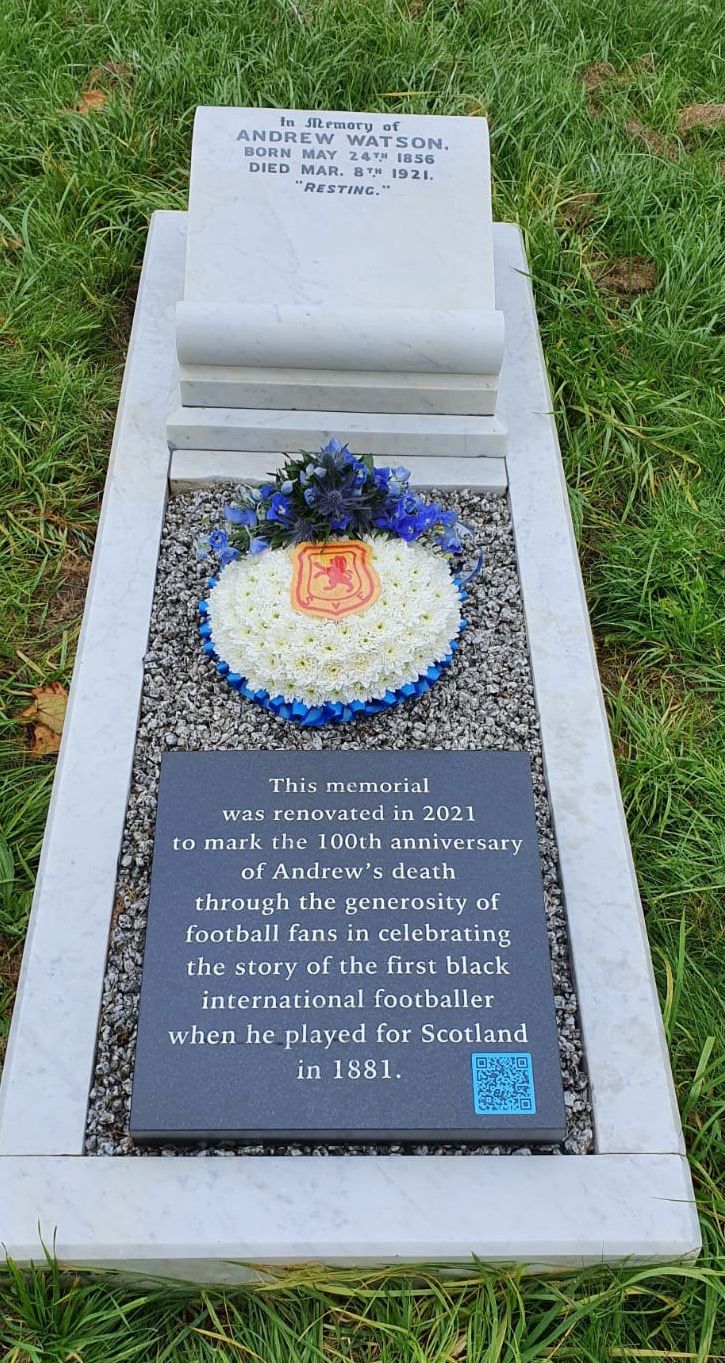Andrew Watson
THE WORLD’S FIRST BLACK INTERNATIONAL FOOTBALLER
ANDREW WATSON was born in Guyana on May 27 1856. The son of Peter Miller Watson, a plantation-owning Scotsman from Kiltearn and a freed, local girl, Andrew was brought to England when he was around three years old. His father’s wealth meant Watson had a privileged upbringing. He was educated privately, before being sent away to boarding schools in Yorkshire and London. Enrolling at Glasgow University in 1875, he would soon drop out and using an inheritance bequeathed to him after his father’s death, began his football odyssey. With little previous experience, his footballing skills rapidly developed, firstly with Maxwell, then Parkgrove, before eventually joining Queen’s Park, the world’s best club. In a few short years, Watson had become one of Scotland’s best players and was called up to the national team.
He captained the Scottish team in the 6-1 defeat of England at the Oval on March 12 1881, which remains England’s biggest defeat on home soil. In this game, Watson became the first Black international football player, and the first Black player to play for, and captain, the Scotland National Team.
Two days later, he played in Wrexham against Wales in a 5-1 Scottish victory. In the following year, on March 11 1882, he played in another hammering of England (this time only 5-1), at the First Hampden Park. The game is commemorated in the fantastic mural on the bowling club pavilion which now occupies the site.
These English defeats had repercussions which changed the game forever. Yet, the international career of this extraordinarily gifted player and sporting pioneer ended after only three appearances. At the height of his career, he moved to London to become a civil servant. This move would exclude his selection for Scotland. His brief international career numbered only three games in two seasons, his record being: P3 W3 F16 A2.
In London, he would play for Swifts and Pilgrims, the best English teams at that time. Later, he would play for the famous amateur club, the Corinthians, becoming the first Black player to play for and captain the gentleman amateurs. For Swifts, he became the first Black player to play in the FA Cup and would also be the first Black umpire to officiate in the same competition.
After three years in the South, he returned to Glasgow, joining Queen’s Park again. After retiring in 1886, he was presented with an opportunity to continue his football career in Liverpool, for Bootle FC. After only one season there, injury finally forced him to hang up his boots for good.
Following his retirement, he became a marine engineer spending over ten years working on steamers crossing the Atlantic, disappearing from the public eye. He moved to Kew in Surrey, around the start of the First World War, where he lived with his second wife and two children until his death from pneumonia on March 8, 1921, at the age of 64.
Over the following decades, Andrew Watson was forgotten and almost lost to history until research by Ged O'Brien and others began to peel away some of the neglect. However, it was believed he had died in Australia (in fact his son) or India, until painstaking research by the inestimable Andy Mitchell, found his final resting place, unkempt and hardly recognisable, in Richmond cemetery, London and this is where the story of the restoration of his grave begins….!
In a previous article for this magazine, I mentioned the first, and most famous, example of the Scottish team wearing the Rosebery colours was the 1881 defeat of England at the Oval. It was Andrew Watson who captained the Scottish team that day. And whilst researching that article, I discovered Andy Mitchell’s Scottish Sport History website(1). He had written about Watson’s life and a visit he made to Watson’s grave in September 2013, when Scotland played England at Wembley.
A friend of mine then visited the grave and took some photographs and like me, was astounded at how the grave still showed no signs of any care and attention. Frankly I was shocked that fully seven years after Andy’s article and on the cusp of the 100th anniversary of Watson’s death, the grave of a man so important to the game’s history was still in such a derelict and unloved state! I shared this information and pictures among fellow Scotland fans researching his ancestry, and his two marriages and four children, but with descendants identified. This confirmation was significant as, after almost 100 years, it meant there would be no objections to cleaning and restoring his grave to a more appropriate condition. It was also hoped that it could lead to a more prominent memorial on the site.
It was decided to raise the money by crowdfunding. Kevin Donnelly kindly agreed to manage this, and after setting up the page, the donations began rolling in. The target was easily achieved within a few weeks. It must be acknowledged that two anonymous contributors donated significant sums. And, after conversations with various stonemasons, a local company was chosen to renovate the headstone in time for March 8 2021, the 100th anniversary of Watson’s death. Unfortunately, due to circumstances beyond our control with Covid-19, we had to change this to have the headstone restored in the 100th year of his death.
However, one of the most important things to come out of the crowdfunding page had been the number of people who have contacted me, interested in Watson! It became apparent many people were working independently, trying to promote Watson’s story believing they were lone voices in the wilderness. But they were now connected with the common goal of getting Andrew Watson properly acknowledged and commemorated. The Crowdfunding page also led to interviews on Sky Sports and the Alex Salmond programme on Russia Today and plans were underway for a follow-up documentary in 2021.
We had also planned to hold a ceremony at the graveside on March 8, 2021, and unveil the restored headstone. However, the effect of Covid-19 impacted this and we arranged a date of significance in Watson’s life later in the year to reveal the restored grave. We hoped to arrange media coverage of the event to help Watson’s story reach a larger audience. This restoration project was the first step in our goal to get a proper memorial raised to one of the most important and significant footballers in the history of the game.
Unfortunately, endless bureaucracy had not yet established who owned Watson’s grave. Obviously, the person who originally purchased the plot is long dead, but due to a fire at the local archives, the original records may have been permanently lost. Sadly, this may mean we may never be able to erect a memorial or substantially change the grave in any way but it does not stop restoration. That has now been completed.
Credit must be paid to the following - their correspondence, input and help in this project will ensure that Watson will be remembered for posterity:
Graeme Brown, Kevin Donnelly, Chris Lodge, Chris McEleny, Andy Mitchell, Ged O’Brien, Claudio Pontone, Tony Talburt, Llew Walker, Emma Watson, Iain Whittle.
Back to Articles
